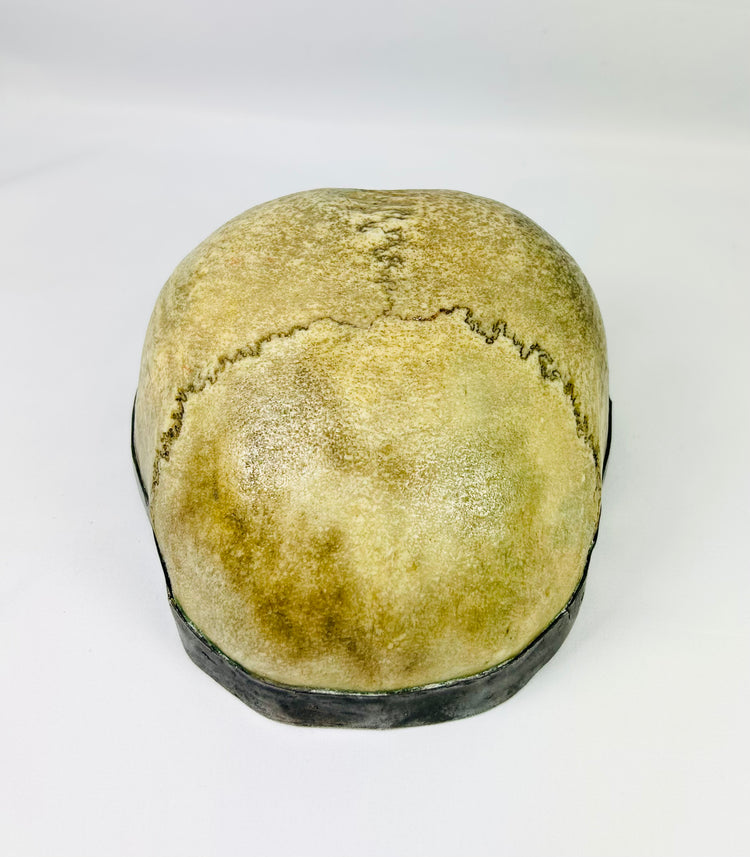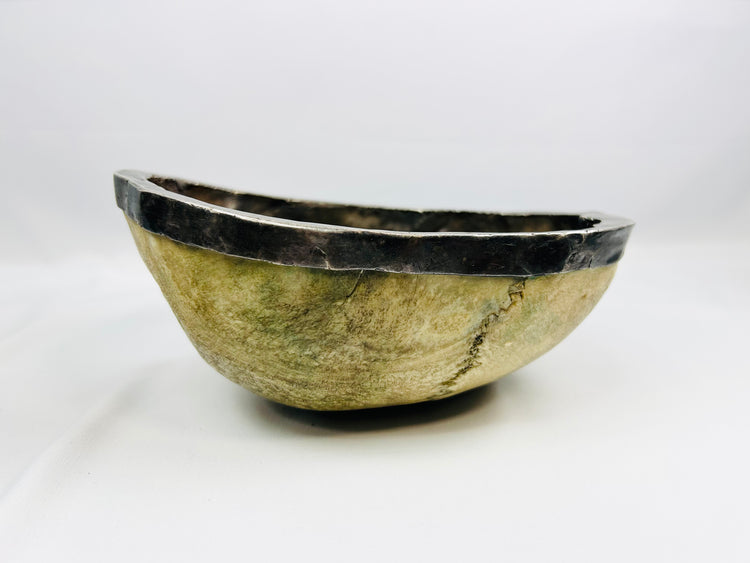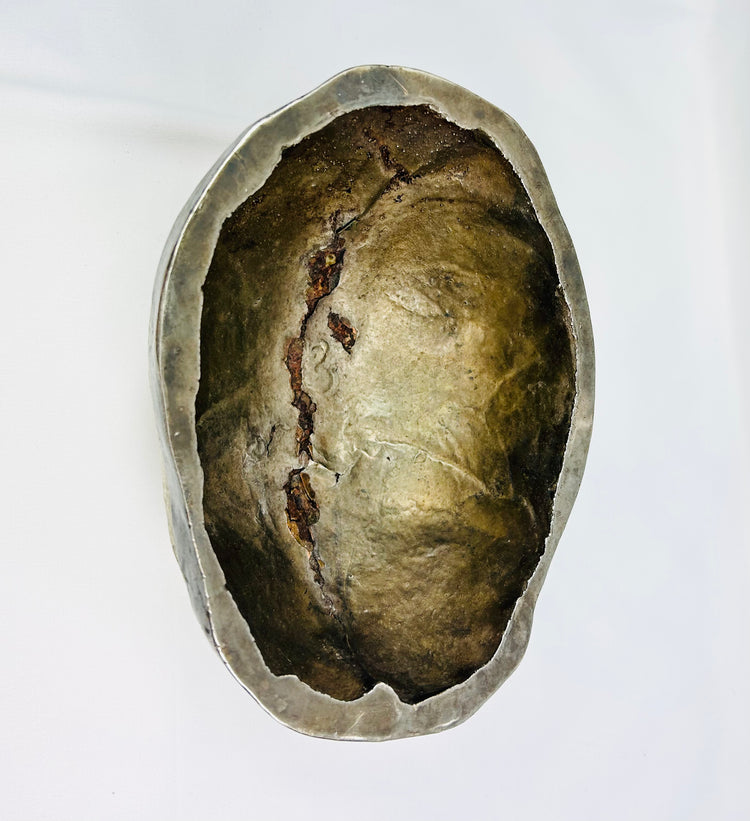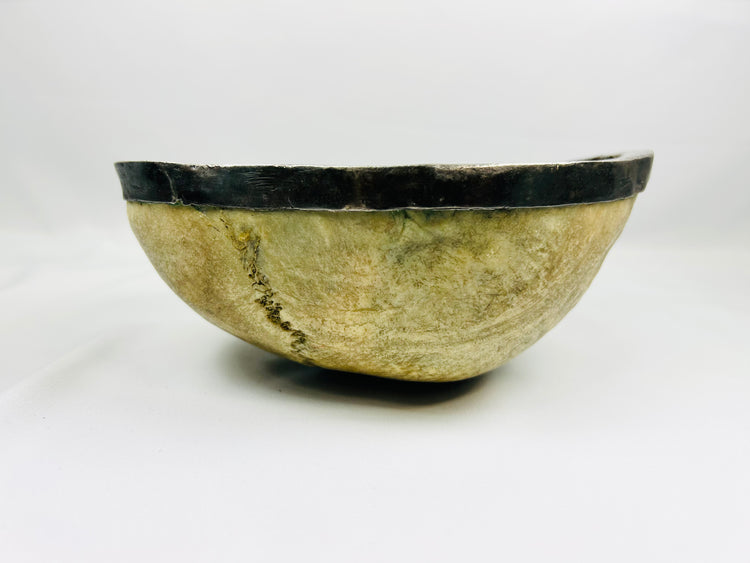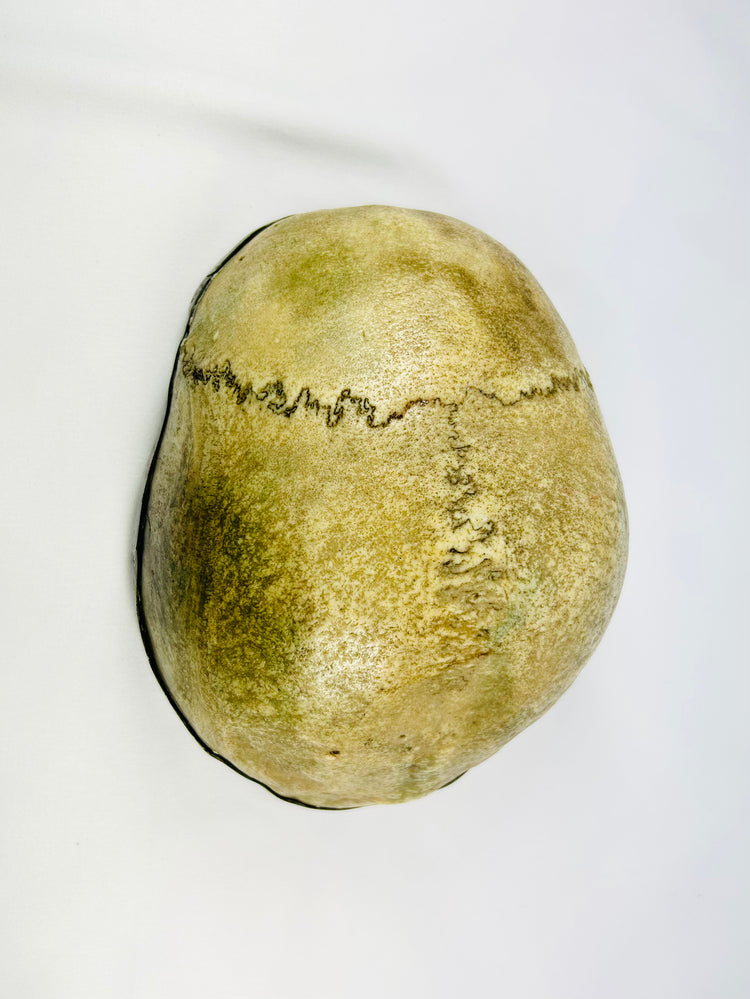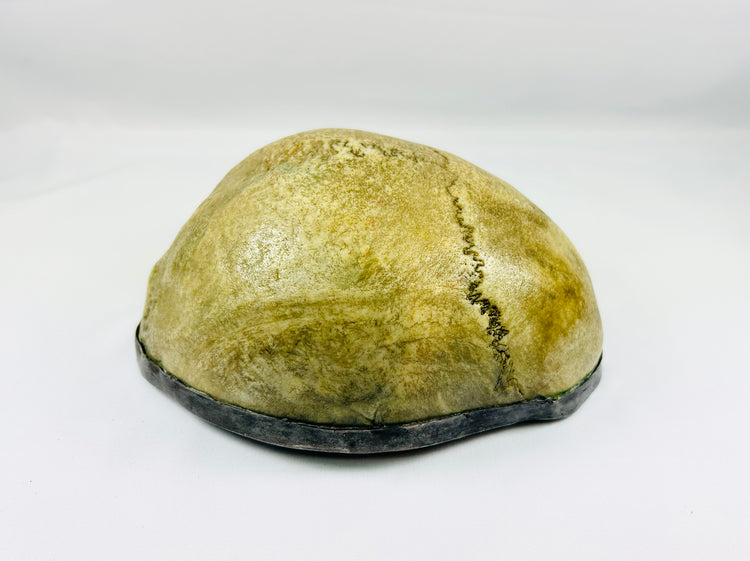Tibetan Kapala Skull Cup | Buddhist Ritual Skull Vessel | 19th-Century
Description
More
Less
Historical Context & Origin
Region: Tibet, Himalayan Buddhist tradition
Material: Human skull with silver rim and inner lining
Period: 19th Century (Tantric Buddhist ritual use)
Description
This authentic Tibetan Kapala ritual skull cup represents one of the most sacred implements in Tantric Buddhist practice. Finely polished and shaped from a genuine human skull, the vessel is fitted with a handcrafted silver lining and rim, symbolizing purification and transformation. The bone’s natural sutures, including the bregma and sagittal lines, remain clearly visible—powerful reminders of life’s impermanence and the meditative focus on mortality central to Buddhist philosophy.
The vessel’s smooth finish and aged patina highlight both its ritual use and historical authenticity, combining sacred materiality with exquisite craftsmanship. Minimalist in form yet spiritually profound, this rare artifact embodies the meditative discipline of impermanence and transcendence practiced within Himalayan monasteries.
Features
- Genuine 19th-century Tibetan Kapala ritual skull cup
- Silver-lined and silver-rimmed human skull vessel
- Visible cranial sutures and naturally aged patina
- Traditionally used in Tantric and Vajrayana Buddhist ceremonies
- Excellent preservation with no modern restoration
Cultural & Ritual Significance
In Vajrayana and Tantric Buddhism, the kapala (Sanskrit for “skull bowl”) is used during advanced meditative and ritual practices that confront mortality and the impermanence of the body. Crafted from skulls obtained through sky burials and ceremonial offerings, such vessels served as instruments of spiritual transformation—transcending fear, desire, and attachment.
Monks and yogic practitioners used these sacred cups in cemetery meditations, Chöd rituals, and offerings to deities such as Mahakala and Vajrayogini, channeling awareness of death into enlightenment. Each kapala thus stands as a material symbol of wisdom, impermanence, and liberation from karmic cycles.
Condition
Excellent condition for its age. The bone shows stable coloration and patina, while the silver rim and inner lining remain intact and hand-finished. No signs of modern restoration; the surface retains definition and spiritual character.
Dimensions (approximate)
Height: 2.5 in
Width: 5 in
Depth: 3.5 in
Age
19th Century CE — Tibetan Buddhist ritual tradition
Learn More
Read More About The Sacred Origins and Rituals of Buddhist Kapala Skull Cups: The practices and rituals of Tibetan Kapala skull caps
Description
Historical Context & Origin
Region: Tibet, Himalayan Buddhist tradition
Material: Human skull with silver rim and inner lining
Period: 19th Century (Tantric Buddhist ritual use)
Description
This authentic Tibetan Kapala ritual skull cup represents one of the most sacred implements in Tantric Buddhist practice. Finely polished and shaped from a genuine human skull, the vessel is fitted with a handcrafted silver lining and rim, symbolizing purification and transformation. The bone’s natural sutures, including the bregma and sagittal lines, remain clearly visible—powerful reminders of life’s impermanence and the meditative focus on mortality central to Buddhist philosophy.
The vessel’s smooth finish and aged patina highlight both its ritual use and historical authenticity, combining sacred materiality with exquisite craftsmanship. Minimalist in form yet spiritually profound, this rare artifact embodies the meditative discipline of impermanence and transcendence practiced within Himalayan monasteries.
Features
- Genuine 19th-century Tibetan Kapala ritual skull cup
- Silver-lined and silver-rimmed human skull vessel
- Visible cranial sutures and naturally aged patina
- Traditionally used in Tantric and Vajrayana Buddhist ceremonies
- Excellent preservation with no modern restoration
Cultural & Ritual Significance
In Vajrayana and Tantric Buddhism, the kapala (Sanskrit for “skull bowl”) is used during advanced meditative and ritual practices that confront mortality and the impermanence of the body. Crafted from skulls obtained through sky burials and ceremonial offerings, such vessels served as instruments of spiritual transformation—transcending fear, desire, and attachment.
Monks and yogic practitioners used these sacred cups in cemetery meditations, Chöd rituals, and offerings to deities such as Mahakala and Vajrayogini, channeling awareness of death into enlightenment. Each kapala thus stands as a material symbol of wisdom, impermanence, and liberation from karmic cycles.
Condition
Excellent condition for its age. The bone shows stable coloration and patina, while the silver rim and inner lining remain intact and hand-finished. No signs of modern restoration; the surface retains definition and spiritual character.
Dimensions (approximate)
Height: 2.5 in
Width: 5 in
Depth: 3.5 in
Age
19th Century CE — Tibetan Buddhist ritual tradition
Learn More
Read More About The Sacred Origins and Rituals of Buddhist Kapala Skull Cups: The practices and rituals of Tibetan Kapala skull caps
You May Also Like

























